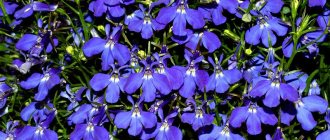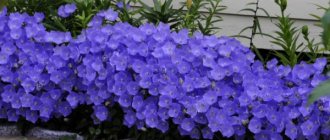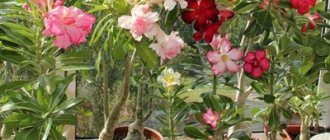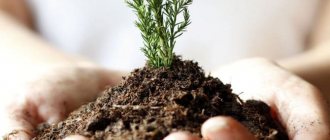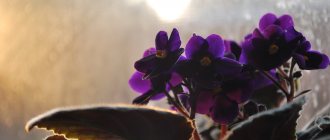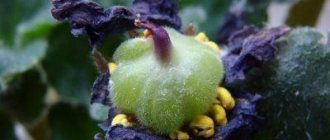OgorodGuruCom
Tips and tricks for gardeners
Popular
Characteristics and description of the Carolina Reaper pepper variety
Home › Vegetables › How to grow ornamental peppers from seeds at home
Decorative peppers are especially popular among amateur gardeners. It is not difficult to grow, so it can be kept indoors. Many varieties of the plant are edible and are used as a seasoning.
Characteristics of decorative pepper
Pepper has appeared in indoor floriculture quite recently; breeders have specially created varieties for home cultivation. The plant belongs to the Solanaceae family; Asia and America are considered to be its homeland.
The decorative perennial does not grow more than 40 cm, but even on such a miniature bush peppers are formed. The lifespan of the plant is about five years, and all this time it can actively bear fruit.
The shape and color of the fruits are varied. Flowering begins in May, and vegetables ripen in October.
How to grow and care
A heat-loving crop from the humid tropics quickly adapts to indoor conditions if you create an environment as close as possible to its natural one. It’s not difficult to create it - you need to choose the right place, lighting, container and care for the plant based on its very small needs.
Varieties of decorative peppers
In fact, there is a wide variety of pepper flower varieties. Here are the most popular plants for indoor growing:
- The black pearl is distinguished by its attractive appearance. The variety is often used for decorative purposes, and is also used for making spices, sauces and seasonings.
- Ogonek stands out from the rest due to its large fruits, which can reach 40 grams. This variety is considered universal; it can be grown both in pots at home and in garden beds.
- Salute is the simplest and most unpretentious shrub crop to grow. The fruits have a fiery taste reminiscent of chili.
- Drakosha pepper looks very beautiful on the windowsill. The lush bush literally attracts attention to itself. The fruits are moderately spicy and are used in cooking and for garnishing preserves.
Regardless of whether the pepper flower is bitter or sweet, it needs care. It is especially important to provide the plant with conditions when growing indoors.
The Medusa pepper got its name because of its unusual appearance; the fruits actually resemble tentacles.
Popular varieties for indoor growing
Not all varieties of decorative peppers are suitable for home cultivation. The following representatives get along best in the apartment:
- Queen of Spades;
- Black Pearl;
- Poinsettia;
- Jamaica.
Note! When cultivating in an apartment, it is necessary to maintain a certain temperature regime in the room with flowers and monitor the humidity. Only in this case will the bushes bear fruit abundantly.
Edible ornamental peppers
Almost all varieties of indoor peppers can be eaten. However, most housewives do not use them for their intended purpose, as they do not want to spoil the visual appeal of the lush shrub.
Multi-colored decorative peppers
There are varieties that are especially attractive for indoor growing. They come in a variety of colors and look like a real rainbow:
- Jamaica;
- Queen of Spades;
- Baby.
The fruits stay on the bush for quite a long time. On average, they begin to fall off three months after full maturity.
The advantage of multi-colored peppers is their visual appeal, but colored fruits, as a rule, are inferior in taste to traditional varieties
Inedible decorative peppers
Decorative hot peppers can also be inedible; such varieties are usually grown for interior decoration. Their appearance is usually attractive, and the fruits themselves delight the eye with bright colors that stimulate the appetite.
In Russia you can meet only two representatives:
- The Clown variety is a small bush that grows no more than 35 cm. The vegetables themselves are elongated and red in color. The plant is not fussy; for regular fruiting it is enough to keep the pot in the sun, moisten the soil and spray it.
- Goldfinger is known for its long yellow peppers that point upward. This variety is classified as a miniature shrub crop; an adult plant barely reaches 25 cm.
Description
Decorative indoor pepper belongs to the Solanaceae family. This plant is also called capsicum. South America is considered its homeland. It was from there that it was brought to the territory of Eurasia.
Previously, capsicum was planted in open ground, used to decorate the landscape. Only relatively recently did they begin to grow hot pepper in a pot as a houseplant.
As can be seen in the photo, it has the shape of a bush, the height of which can vary from 0.15 to 1.2 m. There are both annual and perennial species.
Chili peppers at home on the windowsill can bear fruit for 4-5 years. The appearance of different varieties may vary. Leaves can be elongated and sharp.
There are also specimens with oval or ovoid leaves. The color scheme of the ground part can vary from light shades of green to dark. The color of the flowers is predominantly white. Flowers are collected in inflorescences or arranged singly.
The colors of the fruits are striking in their diversity. These can be yellow, red, orange, purple tones. The color also depends on the degree of ripening of the fruit. In addition, peppers can have different shapes - oval, round, ovoid, etc.
A peculiarity of the plant is that the flowering and fruiting periods are not separated in time. You can enjoy the sight of flowers and fruits at the same time. Another interesting nuance is the abundant yield.
Reproduction methods
Multi-colored peppers reproduce in different ways. It is worth considering the most common options:
- Seeds are a common method of propagation. To do this, planting material is scattered over compost-humus soil. A small layer of soil is poured on top. The first shoots appear on the 15th day.
- By cuttings. To do this, in early spring, strong and healthy shoots are cut from the bush, then they are planted in separate flowerpots. But first, the tops must be pinched.
Growing from seeds is a more labor-intensive and time-consuming process. It's easier and faster to use cuttings.
Ornamental pepper seeds are similar to regular ones, but their size is much smaller
Inedible decorative peppers
Pepper is an edible vegetable, but ornamental varieties often changed their composition as a result of cross-pollination. Therefore, some of them have become dangerous to humans and should absolutely not be eaten.
Clown
On a lush bush up to 35 cm, a lot of round-shaped and small-sized fruits are formed. They change color as they ripen, so at the same time there are green, light yellow, orange, and bright red peppercorns on the bush.
The fruiting period is more than 3 months, then the plant takes a short pause, during which it is necessary to carry out mandatory feeding, and again begins to form ovaries.
Goldfinger
As the name suggests, the fruits are yellow-gold in color. Their shape is slightly elongated, very beautiful, reaching up to 5-6 cm in length. The height of the bush is up to 25-30 cm. The more light the plant receives, the longer the fruiting period will be and the brighter the shades of leaves and fruits will be.
Necessary agrotechnical conditions
Caring for decorative peppers is practically no different from caring for flowers. They require the same conditions and activities.
Timing of seed sowing and pre-planting treatment, germination
Planting seed material in an apartment can be done at any convenient time. But it is best to plant ornamental peppers in February, and first, the seeds should be prepared and treated with growth stimulants.
It is also important to disinfect: to do this, they are placed for half an hour in a weak solution of potassium permanganate.
Important! To be sure that the seeds will sprout, you can germinate them in advance. To do this, the material is wrapped in a damp cloth and kept for a certain time.
Preparing containers and substrate, sowing seeds and germination conditions
Containers for the plant are selected according to the size of the root system. Replanting is carried out as they grow; young peppers need to change the pot twice a year. For older bushes once every 2-3 years.
The culture loves a loose substrate; it is better to take purchased soil intended for peppers. A drainage layer is poured onto the bottom of the flowerpot.
For seed material, it is better to purchase special peat cups. In this case, the risk of damage to the roots during transplantation is reduced. Sowing is carried out to a depth of 1 cm, after which the container is covered with film or glass and left in this state until germination.
Further care before transplantation
After planting the seed, there is no need to water the soil; it is quite enough to moisten the soil by spraying. If the soil was well fertilized for planting, then additional fertilizing is not required. Fertilizers are applied only when the seedlings stop growing. At this time, universal seedling complexes are added.
Pepper transplant
Hot ornamental peppers need to be replanted when more than five leaves form on the stem. To do this, you will need a new container with a volume of 1 liter. It is imperative to lay a drainage layer at the bottom of the flowerpot, this can be:
- coarse sand;
- pebbles;
- ceramic fragments.
The seedlings should be transported with a ball of earth so as not to damage the young and immature roots. Then add more soil and water it thoroughly. After transplanting, place it in a place where there is partial shade.
Small peppers need to be replanted at least twice a year, an adult plant once every 2-3 years
Reviews
Galina Sergeevna, Pskov
I have been growing Aladdin pepper for three years now. I can say that loose peat soil is better suited for it than all others. I plant several seedlings at once in one 2-liter pot to make the bush voluminous and beautiful. For the growth of side shoots, I constantly trim the tops. Before fruiting begins, I spray it with an insecticide once every 30 days to prevent pests from attacking it. I harvest the seeds from a ripened pod, dry them well (not in the sun) and store them, wrapped in paper. One of my first mistakes was that I deeply buried the seeds, and the weakened seedlings appeared late, the seedlings were weak. I dry the peppercorns and grind them into powder. You need to wash your hands thoroughly after handling them, because the pepper is very hot.
Anna Stepanovna, Norilsk
For the first time, I planted Indian Summer pepper from purchased seeds. Germination was poor, because out of five seeds only two sprouted. Of these, I grew two seedlings, one died from overwatering (the child flooded it). I decided to decorate the loggia with pepper, so I prepared the seeds myself - I took a very ripe pod, kept it for several days and took out the seeds. Dried it in the shade on a closet. Germination was excellent - I planted five seeds and four sprouted. Before planting, I soaked it for 20 minutes in potassium permanganate, then sprouted it on cotton wool in a bag. There were enough seeds for both family and friends. A lot of peppers grow on the bush - enough from harvest to harvest. Now I want to dilute the red peppers with yellow ones - I’ll plant Goldfinger.
Unusual indoor pepper bushes, at the same time strewn with flowers and colorful fruits, complete with a beautiful pot, give the room an original look, introducing an element of exoticism. You can create a composition from several varieties and decorate a loggia, kitchen, terrace - growing peppers at home is simple, care is not difficult. The ornamental plant is not only beautiful, but also useful - the sharp pods will make the dish aromatic and add a specific taste.
Caring for indoor peppers at home
Like any other crop, homemade peppers in a pot need care. Seedlings need to be monitored more carefully.
Conditions of detention
It is best to keep the pepper on an eastern or western windowsill. Plants that bear fruit all year round will need additional lighting in the winter.
Note ! It is quite simple to understand that peppers are deficient in light. The shoots begin to develop poorly and the inflorescences do not form.
It is also important to monitor humidity, ventilate the room daily, but in such a way that there are no drafts. The humidity in the room should be from 60 to 70%; if this is not possible, then place containers with liquid next to the plant.
Humidity and temperature
The plant loves warmth. It is optimal to provide a temperature of 25°C for growing hot peppers on a windowsill in spring and summer. In the cold season, it should be reduced to 15 - 18°C. In summer, if possible, take the bush to the balcony or garden.
As for humidity, it should be moderate. Regular spraying is encouraged. In the warm season - once every half month, in the winter - once a month. Bathing in the shower is allowed.
Is it possible to grow ornamental peppers from cuttings?
Hot perennial indoor pepper reproduces well using cuttings, so you can grow it quite quickly. It is necessary to cut off the side shoot, treat it with a growth stimulating agent and plant it in fertile soil.
For faster establishment, create a greenhouse effect, for example, cover with film. Complete rooting takes an average of a month.
Note! If you pinch the tops of the bush, the time for survival and the beginning of growth will come much faster.
Use of indoor pepper fruits
Decorative peppers are widely used in cooking
, for preparing various dishes.
Excellently hot peppercorns are suitable for canning
and preparing various
sauces
. Hot pepper increases appetite; fresh from the bush, it is very tasty for hot first courses.
House pepper is also classified as a medicinal plant.
. Healing tinctures are prepared for use against indigestion, neuralgia, and radiculitis. Hot peppers have been proven to lower blood pressure.
Dried fruits are ground in a meat grinder without seeds, you get a natural spicy seasoning
.
Diseases and pests
As for diseases, gardeners most often encounter fungal diseases. This happens against the background of waterlogging of the soil. The problem can be identified by the leaves; characteristic spots appear on them. If this happens, the bushes must be sprayed with preparations containing copper. This should be done at least twice a week.
Among the pests you can find:
- spider mite;
- mealybug.
You can get rid of insects using special products, the general name of which is insecticides. The solution is made according to the instructions; the green mass and soil are sprayed with it.
Late blight can be easily identified by spots on the leaf blade
Most Read Reviews
Vermicompost for cucumber Grapes Isabella Grapes Muscat Grapes delight Gooseberry pests Pear early ripening Yellow cherries Seedlings of cucumbers turn yellow How to grow plums How to pollinate tomatoes How to water peppers How to plant a pear How to protect strawberries Calcium nitrate Strawberry Marmalade Strawberry Mashenka Strawberry Roxana Strawberry albion When strawberries bear fruit Raspberry hussar M Ulching cucumbers Mulching of tomatoes crumble berries why the tomatoes are withering why cucumbers disappear why the plum dries why the tomatoes are blackened by vaccination of grapes. Reproduction of lemon. Propagation of the rust of rust on cucumbers mesh for cucumbers. How much blooming lines of gooseberry varieties of sessions of the varieties honey than feed gooseberries than useful grapes black raspberries
Errors leading to plant infection
The most common mistake that leads to infection of peppers is poor-quality soil. It is in it that you can most often find harmful bacteria that infect peppers. This is why it is important to calcinate the soil before replanting.
Important! You should not over-water, as this often causes rot on the roots, which is quite difficult to get rid of.
There are no particular difficulties with growing ornamental peppers in an apartment. Provided that certain conditions of detention are met, and the rules of care are not ignored. Carrying out simple agrotechnical measures will ensure abundant fruiting and a healthy appearance of the bush.
Possible mistakes during care
May be interesting Pepper “Admiral Ushakov F1”: the possibility of growing both outdoors and in a greenhouse Description of the pepper variety “Victoria” Pepper “Winnie the Pooh”: a rich harvest with proper care
Failure to follow the rules of care leads to disturbances in the development of plants and fruits. Knowing the mistakes you can make will help you avoid problems.
Bugs and problems:
- cold water causes rot to appear on the roots;
- excess moisture leads to rotting of the roots and shedding of leaves;
- pinching the roots during replanting weakens the plant and, as a result, few flowers are formed and the decorative effect is lost;
- low humidity levels contribute to spider mite infestation;
- the shedding of leaves, flowers, and fruits occurs when there is a lack of light.
Wintering the jasmine bush
Mock orange is one of those beautiful flowering shrubs that feel great in the middle zone and without any protection for the winter. However, this shrub’s ability to withstand winters with the most severe frosts is not so simple. The reputation of shrubs with sufficient winter hardiness often leads to the fact that mock orange is bought without checking, without even specifying what conditions it needs and how hardy a particular variety actually is. And such a check should always be done, checking where a particular shrub was grown and how it overwintered. On the seedling market, along with varieties adapted to a specific area, there is a huge number of varietal and species seedlings that are brought from Europe. And such planting material has very different frost resistance indicators. Among the individual varieties of even “our” mock oranges, there are varieties that winter well at -25, and plants that can only withstand a maximum of -15 degrees. And when you buy a variety without testing, no one guarantees that it will survive the winter.
We described, named and showed photographs of the most popular varieties of mock orange with an excellent reputation and reviews. Therefore, feel free to choose one of them and enjoy the beauty and aroma.
Purpose of round peppers and common varieties
Small round peppers are ideal for canning in jars; what is the variety called and where should it be grown? You can read further. Among spherical vegetables there are not so few large varieties.
Kolobok
This is one of the most popular varieties among gardeners. The weight of one pepper is more than 150 g. It is distinguished by thick walls and pericarp. It is so loved by gardeners due to its resistance to rot, mold and wilt.
“Koloboks” ripen quickly and bear fruit abundantly. The peppers are round in shape and have smooth skin. The pulp is juicy, the vegetables have a pleasant aroma. They are consumed fresh and also used for winter preparations.
Helios
One of the early varieties, distinguished by round-shaped fruits. It takes 110-120 days from seed germination to technical ripeness. Biological ripeness is achieved after 140-150 days. The plant is small in height - about 35 cm. The fruit weighs from 100 to 150 g, the walls are 6-8 mm, the skin is smooth. As it ripens, it acquires a yellow color.
It is recommended to sow the seeds for seedlings first. High-yielding variety that resists wilting. Peppers retain their marketable appearance and are suitable for both direct consumption and canning.
Scythian
Also applies to early peppers. 108-120 days pass before the onset of technical ripeness, biological ripeness occurs later - after 140-155 days. The plant is compact and low - about 35 cm. The fruits are round, weight varies from 150 to 220 g. At first they are light green in color, then they become bright red. They have smooth skin and tender flesh. The walls reach 8-9 mm in thickness.
The Golden Fleece
This variety produces round, slightly flattened peppers. It is classified as mid-season; it takes 115-125 days to reach technical ripeness. Biological ripeness occurs within 150 days. The height of the bush is about 50 cm, the foliage is dense. The weight of one vegetable reaches 180-220 g, fruits with thick walls are 8.5-10 mm.
When biological ripeness is reached, peppers of the Golden Fleece variety have a yellow-orange color. First, it is advised to sow seeds for seedlings. Has excellent taste. Resists verticillium wilt.
Sultan
This mid-season sweet pepper forms a tall bush of 45-60 cm with dense foliage. The fruits are round, with slight ribbing, large in size, weight in the range of 100-150 g. When they reach biological ripeness, which occurs in 158-165 days, they acquire a dark red color. Walls 8-10 mm.
The fruits have excellent taste. Seeds are planted through seedlings; sowing in cassettes is common. The variety resists wilting. Peppers can be used fresh in the kitchen or canned for the winter.
Maria F1
A mid-season hybrid (as the name indicates), producing abundant harvests. The bush is quite tall, the stem grows up to 85 cm. The peppers are round, slightly flattened in shape with a ribbed surface. When they reach biological ripeness, they acquire a rich red color. The weight of one fruit is 100 g, the walls are 6-7 mm.
Novogoshary
The variety forms a standard bush up to 60 cm high. The fruits grow with thick walls (from 8 to 11 mm), the pulp is juicy. The skin is red. If you follow the recommendations for growing this variety, you can get peppers weighing up to 140 g. Fruiting in these plants continues for one and a half months.
Alkaloid preparations isolated from larkspur
Alkaloids
Melliktin
It is used in the following cases:1.2.3.4.5.6.
Tetanus physiotherapy
Mellictin is contraindicated in the following pathologies:
- myasthenia gravis and other pathologies, one of the symptoms of which is a decrease in muscle tone;
- renal and liver failure;
- decompensation of the heart.
1.2.3.
atropine
Elatine
Elactin is indicated for the following conditions:
- pathologies characterized by hypertonicity of skeletal muscles due to disruption of the pyramidal tract;
- brain dysfunction with signs of muscle hypertension;
- traumatic, infectious and postoperative brain damage;
- dyskinesia of various origins.
myasthenia gravis renal failure
Delsemin
In case of overdose, an injection of a mixture of proserine and atropine is given to prevent the following symptoms:1.2.
fatigue
3.
